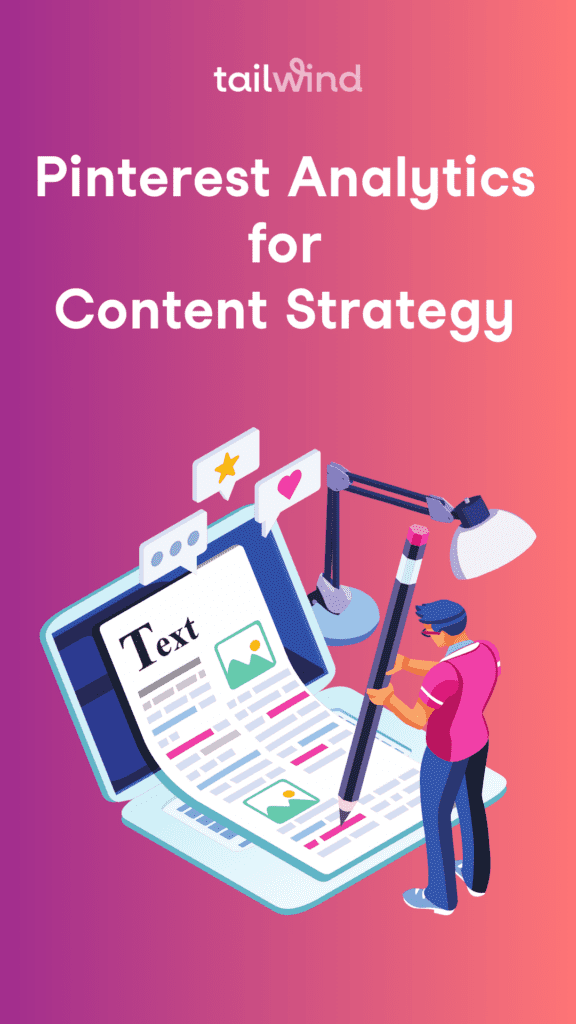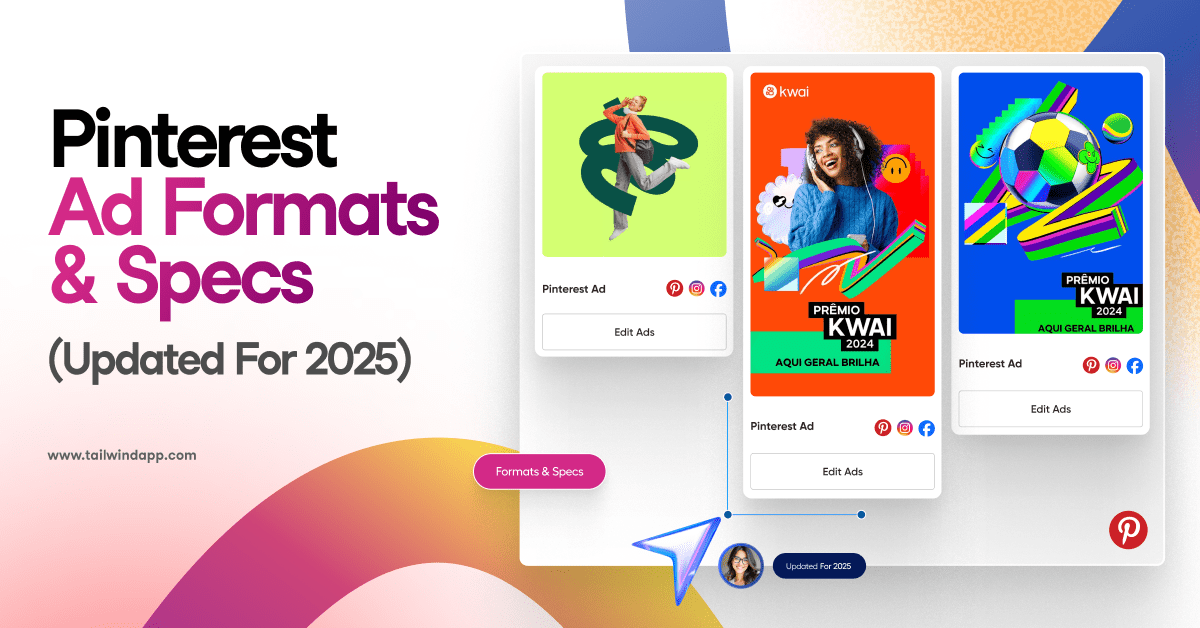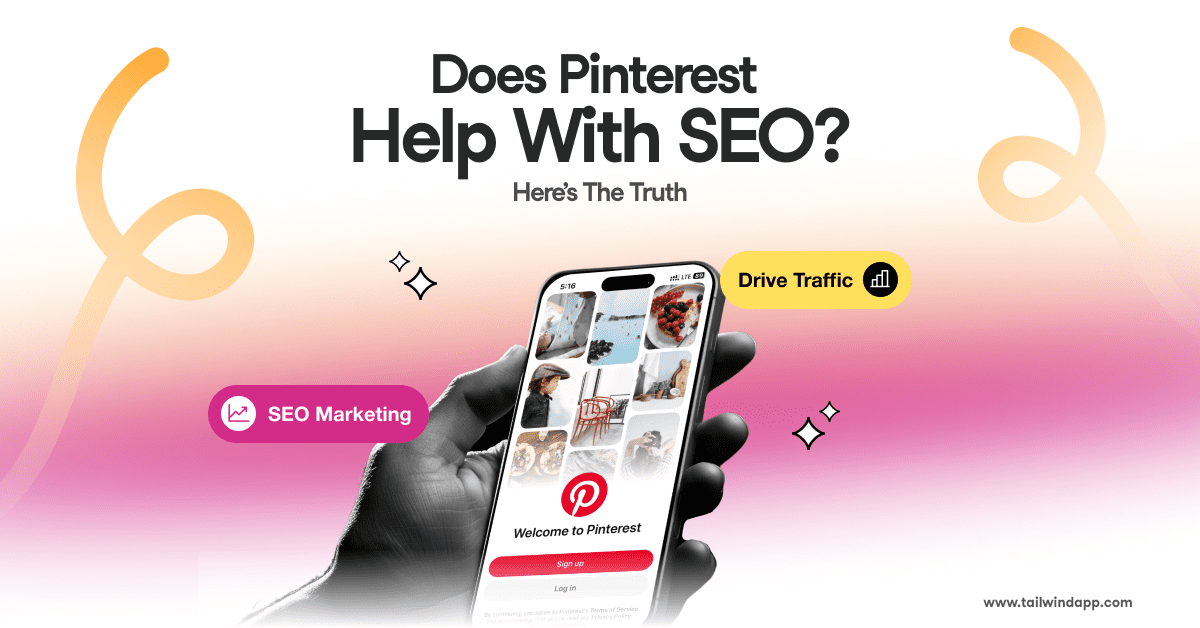
What you do not measure you cannot improve. You’ve heard this phrase many times before in multiple forms.
As you can imagine, it is very true when it comes to content marketing. A good piece of content takes time and effort, and it is painful (spiritually) to see all that work go to waste if nobody is interested in the topic.
Pinterest can become one of the pillars of your content marketing strategy. Pins are easy to create, and with Pinterest they can become an indicator of topical areas that might be worthy of a full blown post on your blog!
Leveraging Pinterest Analytics for Blog Content Strategy
Pinterest Analytics is a robust tool that can significantly shape your blog’s content strategy. By diving into the available data, you can uncover patterns and preferences that speak to your audience’s interests.
Firstly, keep an eye on the engagement rate. This metric tells you how often users interact with your pins. High engagement rates indicate content that resonates with viewers. In contrast, low rates can signal a need to revise your approach.
Key Metrics from Pinterest Analytics:
- Impressions: How often your content appears on user screens.
- Saves: The number of times users saved your pins for later reference.
- Clicks: Which pins are driving traffic to your blog.
Next, website traffic is crucial. Pay attention to the volume of visitors coming from Pinterest to gauge how well your pins convert browsers into readers.
- Review engagements per pin.
- Note which pins increase website traffic.
- Adjust your content according to user interactions.
Understanding What Your Audience Loves on Pinterest
When you dive into Pinterest Analytics, you’ll get a treasure trove of data about your audience’s interests.
Start by checking out the Audience Insights. Here’s where you get a clear visual of what content your followers are digging. Are they into DIY crafts or gourmet recipes?
The interests section will lay it all out.
Now, look at the engagement numbers. These tell you not just who’s seeing your pins, but who’s loving them enough to save or click them. It breaks down into two groups:
- Total Audience: Everyone who sees your pins.
- Engaged Audience: The folks who interact with your content.
Use a simple list to keep these concepts clear:
- Total Audience = Eyes on your pins
- Engaged Audience = Interactions with your pins
The demographics part of Pinterest Analytics provides you with details like age, gender, and location. This isn’t just numbers; it’s a snapshot of who your audience really is.
Tailoring your content to their preferences becomes a snap once you understand these metrics.
Your goal is to craft pins that resonate with your audience. So, pay close attention to the data and let it guide your content creation.
Translating Pinterest Trends into Blog Topics
When you’re scrolling through your Pinterest feed, pay attention to the pins that are gaining traction.
These trending pins can be a goldmine for your blog content ideas. By using Pinterest Analytics, you have a direct line to what’s hot right now, which is incredibly valuable when determining your next blog topic.
Getting Started with Analytics: First, make sure you’ve got a Pinterest Business account. It unlocks access to Pinterest Analytics, where you can track trends based on user engagement with your pins.
Spotting the Trends: Keep an eye on the ‘Trends’ section in Pinterest Analytics. Here, you’ll find a list of currently trending topics and search terms. Note the patterns that emerge in:
- Popular themes
- Color schemes
- Design styles
Matching Trends to Content: Once you’ve identified a trend, brainstorm how it can translate into a fresh blog post. Say you notice a surge in “DIY home office decor”:
- Determine the angle: Are people looking for budget-friendly ideas or minimalist designs?
- Craft your title: “10 DIY Home Office Decor Ideas on a Budget” could be a hit.
Creating Pins for Your Posts: After publishing your post, create a visually appealing pin that includes:
- A tip from your blog
- Engaging images
- Keywords from the trend
This will help your pin stand out and drive more traffic back to your blog.
Remember, Pinterest is a visual platform, so the better your pins look, the more likely they are to get noticed.
Keep tracking those analytics to stay ahead of the curve and keep your blog filled with content that readers are actively searching for.
Optimizing Your Blog Content for Pinterest Sharing
Creating blog content that’s ripe for Pinterest sharing is a savvy move. You want your posts to catch the eye, snag those clicks, and encourage engagement. Here’s how:
Get Visual: Pinterest is visual-heavy, so make sure each blog post has at least one pinnable image. That means high-quality and relevant to your content.
Perfect Pin Format: Ideally, go for a 2:3 aspect ratio for your images—this size tends to perform best on Pinterest.
Meaningful Descriptions: Craft descriptions for your pins that are both informative and enticing. Use keywords that resonate with your audience, aiming for that sweet spot of around 100-200 characters.
- DO: Hint at what your blog post offers
- DON’T: Over-stuff with keywords
Engagement Focus: Include questions or teasers in your pin descriptions to draw people in. This ups the chance of comments and repins.
Smart Pin Placement: Make sure pins are easy to find by placing ‘Save’ buttons over images or using Pinterest widgets.
Call-to-Action Matters: Nudge readers to action. Within your blog, add a simple sentence encouraging them to pin: “Pin this guide for later!”
Monitoring Clicks: Use Pinterest Analytics to track what content generates the most interest and refine your strategy accordingly.
Remember, it’s a blend of great visuals, spot-on descriptions, and strategic placement that will get your blog’s content noticed on Pinterest. Engage with your analytics to learn, adapt, and watch your Pinterest presence grow.
Using Pinterest to Uncover Keywords for Your Blog
When you’re building your content strategy, knowing the right keywords can be like striking gold. Pinterest isn’t just a hub for crafting ideas and recipes — it’s a goldmine for SEO.
Look at Pinterest Suggested Searches. You know when you start typing in the Pinterest search bar and it automatically suggests things? That’s not just guesswork — it’s based on real search volume. Use these suggestions to guide your keyword selection.
- Begin typing a broad keyword related to your blog topic.
- Note the suggested terms that pop up.
- Jot these down as potential keywords for your blog content.
Dive into Analytics. It’ll show you what’s working and what’s not.
- Identify which pins and boards are getting the most traction.
- Look for common themes and words in your top-performing pins.
Check Out Competitors. Peek at other pins in your niche.
- What keywords are they using in their pin titles and descriptions?
- Can you spot any patterns or frequently used words?
Shaping Your Content. Once you have your keywords, infuse them into your blog.
- Titles and Subheadings: Catch the reader’s attention with SEO-rich headings.
- Blog Content: Naturally weave keywords into your posts without overstuffing them.
Remember, it’s not just about high search volume; relevance to your content is key. Happy Pin-hunting!
Crafting Pinterest-Friendly Blog Post Images
Creating images that resonate with your Pinterest audience is crucial for boosting your content engagement and driving traffic to your blog. Here’s a quick guide to making your visuals Pinterest-friendly.
Size Matters: Pinterest favors vertical images. Aim for a 2:3 aspect ratio, like 1000 x 1500 pixels, to make your images look their best on the platform.
High Quality, Always: Use crisp, high-resolution pictures. They’re more likely to catch the eye and get repinned, increasing your brand awareness.
Text Overlay: Add a bold, readable title on your image. Pick a font that reflects your brand’s personality.
Visual Consistency: Stick to a consistent color scheme and style. It makes your content easily recognizable.
Content Type Is Key: Mix it up with infographics, how-tos, or listicles that deliver value and draw in pinners.
Infuse Your Brand: Don’t forget to include your logo, but keep it subtle. You want to enhance brand recall without overwhelming the visuals.
Call-to-Action: Entice users with a clear call-to-action (CTA) that encourages clicks back to your blog.
By keeping your visuals aligned with these tips, you’ll create Pinterest-friendly images that not only look great but also work hard to drive engagements and funnel traffic to your content.
Scheduling Blog Content Based on Pinterest Activity Peaks
Pinterest analytics is your secret weapon when it comes to timing your blog content. Think of analytics as a crystal ball that shows when your audience is active and engaged. Here’s how you can use this data to plan your content schedule.
First things first, check out the traffic patterns on your Pinterest insights. Look for spikes in activity and note the days and times. These are your golden hours for engagement. When you post content that leads back to your blog during these peaks, you’re more likely to catch the wave of active pinners.
Now, let’s talk strategy. Outline your content topics in advance and match them with these peak times. If your analytics show that your followers are night owls, schedule your posts accordingly. Keep your plan flexible—you want to adapt to any shifts in user activity.
Here’s a quick way to visualize your data:
- Monday: 10% increase in engagement after 7 PM
- Wednesday: 15% increase in traffic, high repins at 9 PM
- Friday: Peak user activity at 8 PM
Remember, metrics are more than just numbers. They tell a story about your audience’s behavior. Use this story to tailor your Pinterest marketing strategy.
Keep your content diverse and engaging. Align your blog topics with Pinterest trends and watch your engagement numbers climb. By syncing your blog schedule with Pinterest’s busiest hours, your content has a better chance of getting noticed.
PRO TIP
Pay attention to the engagement rate on individual posts. Replicate the high-performing ones during peak times. This could mean more eyeballs on your blog and a potential increase in loyal followers.
Integrating Pinterest Insights into Blog Editorial Calendars
Start by checking out which pins and boards are getting the most love. Engagement metrics, like saves and clicks, show what’s resonating with your audience. You’ll want to weave more of this kind of content into your upcoming blog posts.
Here’s how you might organize the data:
- Most Popular Pins: Pin titles, link to pin, number of saves, number of clicks
- Top Boards: Board names, total engagement, your related blog topics
Now, let’s get practical. Say you notice a trend for DIY crafts:
- Spot the Trend: DIY crafts are hitting off.
- Plan the Content: Schedule more DIY blog posts.
- Tailor the Strategy: Craft blog titles similar to those high-performing pins.
- Measure & Adapt: Post and then use Pinterest insights to inform your next moves.
Your editorial calendar should reflect both your long-term marketing strategy and the in-the-moment trends. Regularly update your calendar based on Pinterest analytics to ensure your content stays fresh and engaging.
Next, integrate specific campaign plans. If you’ve got a seasonal campaign coming up, analyze last year’s Pinterest performance in that season and prepare to publish and pin content that aligns with past successes.
Remember, each pin leading back to your blog is a potential traffic goldmine. Use Pinterest insights — not just as a reflection of the past but as a roadmap for the future of your content marketing efforts on your blog.





